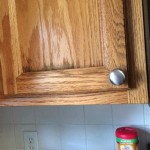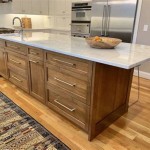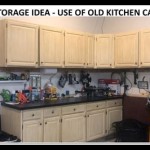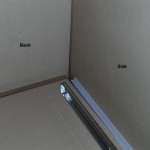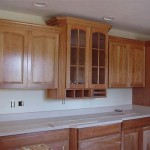Can You Take Vinyl Wrap Off Kitchen Cupboards? A Comprehensive Guide
Vinyl wrapping kitchen cupboards has become a popular and cost-effective method for updating the appearance of a kitchen without the expense and disruption of a full renovation. However, the question of removability often arises. Can vinyl wrap be taken off kitchen cupboards once applied, and what does the process entail? This article addresses these questions, providing a comprehensive guide to removing vinyl wrap from kitchen cupboards, covering potential challenges, necessary tools, and step-by-step instructions.
Understanding Vinyl Wrap and Its Adhesion
Vinyl wrap, commonly used for kitchen cupboards, consists of a thin, self-adhesive film. The adhesive is designed to bond to smooth, non-porous surfaces like the melamine or laminate typically found on cupboard doors and drawer fronts. The strength of this bond is crucial for the wrap's longevity and appearance; however, it also dictates the difficulty of removal. Several factors affect the bond strength, including the type of vinyl used, the quality of the adhesive, the surface preparation before application, and the length of time the wrap has been in place.
The longer the vinyl wrap remains applied, the stronger the bond tends to become. This occurs as the adhesive cures and increasingly integrates with the underlying surface. Environmental factors such as temperature and humidity can also play a role, accelerating or decelerating the curing process. Furthermore, exposure to sunlight can cause the vinyl to become brittle and more difficult to remove in one piece.
Assessing the Condition of the Underlying Cupboard Material
Before attempting to remove any vinyl wrap, it is crucial to assess the condition of the cupboard doors and drawer fronts. The type of material used in the construction of the cabinets will significantly influence the removal method and the potential for damage. Common materials include melamine, laminate, wood veneer, and solid wood. Melamine and laminate are generally smoother and more durable, making them less susceptible to damage during removal. Wood veneer, on the other hand, is a thin layer of wood applied over a core material and is more prone to chipping or peeling when the vinyl is removed aggressively. Solid wood is usually the most resilient, but even solid wood can be damaged by harsh chemicals or excessive heat.
Examine the edges and corners of the cupboards for any signs of pre-existing damage, such as chips, cracks, or peeling. These areas are often the most vulnerable. Taking note of any existing imperfections will help in determining the most appropriate removal technique and in managing expectations regarding the final outcome.
Essential Tools and Materials for Vinyl Removal
Successful vinyl wrap removal requires the right tools and materials. Using the appropriate tools will minimize the risk of damaging the underlying cupboard surface and make the process more efficient. The essential items include:
- Heat Gun or Hair Dryer: Heat softens the adhesive, making the vinyl easier to peel away. A heat gun provides more concentrated heat, but a hair dryer is a safer option for beginners.
- Plastic Scraper or Putty Knife: These tools are used to gently lift the edges of the vinyl and scrape away any adhesive residue. Avoid using metal scrapers, as they can scratch the cupboard surface.
- Cleaning Solution: A solvent-based cleaner, such as Goo Gone or mineral spirits, is necessary to remove stubborn adhesive residue. Alternatively, a mixture of warm water and dish soap can be used for milder residue.
- Soft Cloths or Sponges: These are used to apply the cleaning solution and wipe away any residue.
- Protective Gloves: Gloves protect the hands from the heat and chemicals.
- Safety Glasses: Safety glasses protect the eyes from any debris or chemical splashes.
Optional, but useful, items include a seam roller (for re-applying any lifted edges if desired, although not directly related to removal), masking tape (to protect adjacent surfaces), and a ventilation system to manage any fumes from the cleaning solutions.
Step-by-Step Guide to Removing Vinyl Wrap
The following steps provide a detailed guide to removing vinyl wrap from kitchen cupboards:
- Preparation: Clear the surrounding area and protect any nearby surfaces with drop cloths or masking tape. Ensure adequate ventilation, especially when using solvent-based cleaners.
- Heating the Vinyl: Using a heat gun or hair dryer, apply heat evenly over a small section of the vinyl. Keep the heat gun moving to avoid overheating and damaging the cupboard surface. The goal is to soften the adhesive, not to melt the vinyl.
- Lifting an Edge: Once the vinyl is sufficiently heated, use a plastic scraper or putty knife to gently lift an edge of the vinyl. Start at a corner or along a seam for easier access.
- Peeling the Vinyl: Slowly peel the vinyl away from the cupboard surface, maintaining a shallow angle. Continue to apply heat as needed to soften the adhesive. If the vinyl tears, reheat the area and try again. Avoid pulling too forcefully, as this can leave behind adhesive residue or damage the underlying surface.
- Removing Adhesive Residue: After removing the vinyl, adhesive residue will likely remain on the cupboard surface. Apply a cleaning solution, such as Goo Gone or mineral spirits, to a soft cloth and gently rub the affected area. Allow the solution to dwell for a few minutes to soften the residue.
- Scrubbing and Wiping: Using a clean cloth or sponge, scrub the residue until it loosens and comes away. Wipe the surface clean with a damp cloth to remove any remaining cleaning solution. Repeat the process as necessary until all the adhesive residue is gone.
- Inspection and Cleaning: After removing the vinyl and adhesive, inspect the cupboard surface for any damage. Clean the surface thoroughly with a mild detergent and water to remove any remaining traces of cleaning solution. Allow the surface to dry completely before applying any new finish or treatment.
Troubleshooting Common Issues
Despite careful adherence to the above steps, several common issues may arise during vinyl wrap removal. Addressing these issues effectively can prevent further damage and ensure a satisfactory outcome. A common problem is tearing. If the vinyl tears frequently during peeling, it indicates that the adhesive is not sufficiently softened. Increase the heat applied to the area and try peeling at a slower pace.
Another problem is excessive adhesive residue. If the adhesive residue is particularly stubborn, try using a stronger cleaning solution or allowing the solution to dwell for a longer period before scrubbing. In some cases, a citrus-based cleaner may be more effective. If the cupboard surface is damaged during removal, it may be necessary to repair the damage before applying a new finish. Small scratches can often be buffed out, while more significant damage may require filling and sanding.
If the cupboards are made of wood veneer, exercise extreme caution when heating and peeling the vinyl. Wood veneer is particularly susceptible to damage from heat and excessive force. Work in small sections and use a low heat setting to minimize the risk of peeling or chipping the veneer.
Considerations for Repainting or Refinishing After Vinyl Removal
Once the vinyl wrap has been successfully removed, the kitchen cupboards are ready for a new finish. Painting is a popular option, offering a wide range of colors and finishes. However, proper preparation is essential for a successful paint job. Start by thoroughly cleaning the cupboards to remove any remaining residue or contaminants. Lightly sand the surface to create a better bond for the primer and paint.
Apply a high-quality primer specifically designed for the type of material the cupboards are made of. The primer will help the paint adhere properly and prevent any bleed-through from underlying stains or colors. Apply two coats of paint, allowing each coat to dry completely before applying the next. Choose a durable paint that is resistant to scratches and stains.
Alternatively, the cupboards can be refinished with a new layer of laminate or veneer. This option is more complex and may require professional assistance, but it can provide a more durable and aesthetically pleasing result. Before applying new laminate or veneer, ensure that the cupboard surface is smooth and free of any imperfections. Follow the manufacturer's instructions carefully to ensure proper adhesion and a long-lasting finish.
Ultimately, removing vinyl wrap from kitchen cupboards is a manageable task with the right tools, techniques, and patience. Careful assessment of the cupboard material, thorough preparation, and a methodical approach will minimize the risk of damage and ensure a successful outcome.

How To Remove Vinyl Wrap From Kitchen Doors Checkatrade

Kitchen Spraying Over Vinyl Wrapped Kitchens Wespray

Painting Kitchen Cupboards Vs Vinyl Wrapping Wrap Upvc Spray Services

Are Vinyl Wrap Kitchens Any Good Wespray

Home Dzine Kitchen Remove Foil Vinyl Wrap From Cabinet Doors

How To Wrap Your Kitchen In Vinyl Home

Ling Vinyl Wrap Doors Can You Fix Them Dianella Polishing

Home Dzine Kitchen Remove Foil Vinyl Wrap From Cabinet Doors

Home Dzine Kitchen Remove Foil Vinyl Wrap From Cabinet Doors

How To Revamp Your Kitchen With This Diy Without Damaging Al And Make It Look Like A Professional Job Daily Mail
Related Posts

